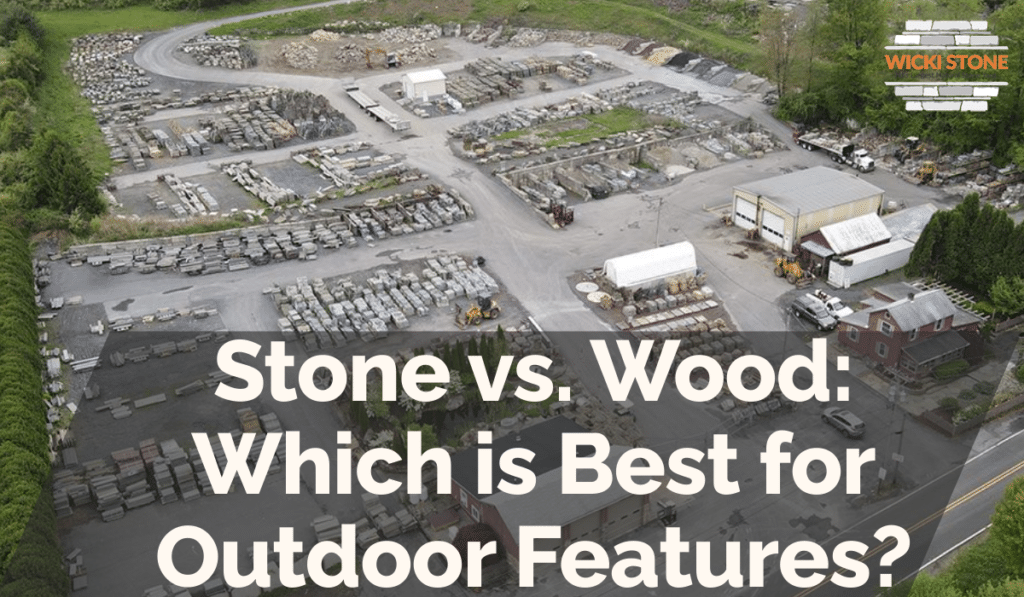
Stone vs. Wood: Which is Best for Outdoor Features?
When designing an outdoor space, choosing the right material is essential for creating both a functional and visually appealing environment. Natural stone and wood each offer distinct aesthetics and practical advantages that can transform patios, seating areas, garden walls, or decking into inviting retreats.
Natural Stone’s Timeless Appeal
Natural stone imparts an air of permanence and strength to exterior features. Its rugged texture and varied color palette are the result of millennia of geological processes, making each piece uniquely captivating. Homeowners appreciate natural stone for its ability to blend seamlessly into various landscape designs, from modern minimalist patios to rustic country garden paths.
- Durability: Resistant to harsh weather conditions and wear, natural stone stands strong over time.
- Low Maintenance: Its inherent resilience means less frequent upkeep compared to other materials.
- Unique Aesthetics: Each stone is one-of-a-kind, offering a rich variety of textures and hues.
- Sustainability: When responsibly sourced, natural stone is an eco-friendly choice.
Wood’s Warm, Inviting Charm
Wood, with its natural warmth and organic appeal, creates outdoor spaces that feel welcoming and cozy. It is renowned for its versatility, allowing for custom designs that suit traditional as well as contemporary environments. Whether used in pergolas, deckings, or garden furniture, wood brings a timeless elegance to outdoor settings.
- Adaptability: Wood can be easily shaped, stained, and finished to match diverse design visions.
- Eco-Friendly Options: Responsibly sourced wood contributes to sustainable building practices.
- Cost-Effective: Often, wood presents a more budget-friendly option, especially when local varieties are used.
- Natural Warmth: The organic textures and colors create an inviting atmosphere.
Comparing Material Characteristics
Deciding between natural stone and wood involves understanding how each material fits into your aesthetic and practical requirements. The following comparisons can guide your decision-making process:
- Longevity: Natural stone generally outlasts wood in extreme weather. Its ability to endure temperature fluctuations, heavy rains, and intense sunlight makes it ideal for permanent features.
- Maintenance: Wood requires regular treatments to prevent rot, insect damage, and weathering. Natural stone, on the other hand, typically needs less frequent cleaning and doesn’t have to be sealed.
- Installation and Weight: Stone’s heft means installation may involve additional structural support or professional help, while wood is typically lighter and easier to maneuver.
- Design Flexibility: Wood offers a high degree of customization in terms of form and finish, which can be an advantage for creative or intricate design details.
- Cost Considerations: The initial cost for natural stone can be higher due to its durability and longevity; however, wood might incur ongoing costs due to maintenance and periodic replacement.
Evaluating Your Outdoor Project Needs
Before making a final choice, consider several key factors that will influence which material best suits your project:
- Climate Exposure: In areas with severe weather, natural stone offers robust performance. Wood may require protective treatments in humid or wet conditions.
- Usage Intensity: For high-traffic areas that experience a lot of wear and tear, durability is paramount. Natural stone can better withstand frequent use.
- Maintenance Commitment: Assess the level of upkeep you’re prepared to undertake. Wood may need routine sealing and inspections, whereas natural stone often demands less intervention.
- Budget Constraints: Establish a clear budget, keeping in mind the long-term maintenance costs along with the initial material price.
- Aesthetic Goals: Determine which material’s natural appearance meshes best with your design vision and the architectural style of your home.
FAQs
How does natural stone perform in extreme weather?
Natural stone is highly resilient and can endure temperature extremes, heavy rains, and direct sunlight. Its inherent durability makes it an excellent choice for long-lasting outdoor features.
Can wood be used for all outdoor elements?
Wood works wonderfully for structures that benefit from a warm, organic look, such as decks and pergolas. However, it may not be the ideal choice for areas with excessive moisture or heavy wear unless treated and maintained regularly.
Are there sustainable options for both materials?
Absolutely. Responsibly sourced natural stone minimizes environmental impact, and selecting wood certified for sustainable forestry practices ensures a lower ecological footprint.
Which material is more cost-effective in the long run?
While wood might have a lower upfront cost, its ongoing maintenance can increase expenses over time. Natural stone typically has a higher initial cost, but its longevity and minimal maintenance can render it more economical over decades.
Conclusion
The choice between natural stone and wood for outdoor features ultimately depends on how each material aligns with your design aspirations, durability needs, budget, and maintenance preferences. Natural stone offers unparalleled durability and a timeless aesthetic, making it a robust solution for enduring designs. Conversely, wood brings warmth and flexibility, ideal for projects where creativity and a personal touch are paramount. Weighing these factors will inform a decision that elevates your outdoor space and meets your long-term goals.
